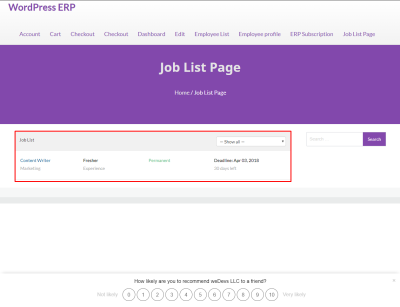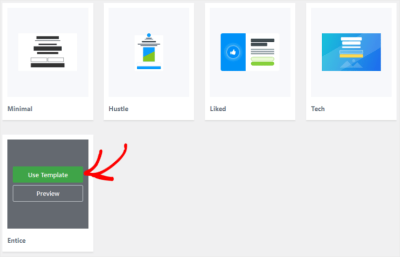If you’re serious about boosting your website’s SEO and making your content stand out in search engine results, then the Snip Structured Data Plugin for WordPress is a tool you definitely want to explore. Designed to simplify the process of adding structured data to your site, Snip helps search engines understand your content better, which can lead to enhanced rich snippets, improved visibility, and more clicks. Whether you’re a seasoned SEO pro or a beginner just starting out, this plugin offers an intuitive way to implement schema markup without the hassle of coding. Let’s dive into what makes Snip a game-changer for WordPress users.
Overview of the Latest Features in Snip Plugin

The newest version of the Snip Structured Data Plugin is packed with exciting features that make managing structured data easier and more effective. Here’s a quick rundown of some of the top highlights:
- Auto-Detection of Content Types: Snip now intelligently detects your content type—be it articles, products, reviews, recipes, or events—and automatically applies the appropriate schema markup. This saves you time and ensures accuracy.
- Custom Schema Builder: Want more control? The new custom schema builder lets you create tailored schema markup using a user-friendly interface, even if you have no coding experience.
- Enhanced Compatibility: Snip seamlessly integrates with popular SEO plugins like Yoast, Rank Math, and All in One SEO. This means you can manage your structured data alongside your existing SEO settings without conflicts.
- Rich Snippet Preview: Before publishing, see a live preview of how your rich snippets will look in search results. This helps you optimize your data for maximum impact.
- Schema Templates: The plugin introduces ready-to-use schema templates for common content types, making setup quick and straightforward.
- Performance Optimization: The latest update focuses on speed, ensuring that adding structured data doesn’t slow down your website, keeping user experience smooth.
With these new features, Snip makes it easier than ever to enhance your site’s SEO, improve your search appearance, and attract more visitors. Whether you’re adding schema for products, articles, or local business information, the plugin’s intuitive tools help you do it efficiently and effectively.
3. Enhanced Schema Markup Capabilities

One of the most exciting updates in the Snip Structured Data Plugin is its enhanced schema markup capabilities. If you’ve ever struggled to add or customize schema on your website, you’re going to love what’s new. This plugin now supports a broader range of schema types, making it easier than ever to tell search engines exactly what your content is about.
Whether you’re running a local business, an online store, a blog, or a recipe site, the plugin offers tailored schema options to match your needs. Some of the standout features include:
- Expanded Schema Types: Now includes support for newer schema types like FAQ, HowTo, Product, and VideoObject, helping your content stand out in rich snippets.
- Custom Schema Fields: Easily add custom properties to your schemas to provide more detailed information—think of it as giving search engines a full rundown of your content.
- Automatic Schema Generation: Snip now intelligently generates schema based on your content, reducing manual effort and ensuring accuracy.
- Validation & Testing: The plugin integrates with Google’s Rich Results Test, so you can quickly verify if your schema is set up correctly before publishing.
Imagine the difference it makes when your product pages show star ratings, availability, or pricing directly in search results. Or when your FAQs appear as rich snippets, giving users immediate answers. These enhancements help increase your visibility and click-through rates, ultimately driving more traffic to your site.
And don’t worry if schema setup sounds intimidating; the plugin’s guided setup and pre-built templates make it accessible even if you’re not a technical whiz. The goal is to help you leverage schema markup effortlessly so your content gets the recognition it deserves.
4. Improved User Interface and Ease of Use
If you’ve previously used structured data plugins, you know that complex interfaces can sometimes make setup a chore. Snip’s latest update focuses heavily on improving the user interface to make managing schema markup as straightforward and intuitive as possible. It’s all about giving you a smoother experience so you can focus on creating great content without getting bogged down in technical details.
Some of the key UI improvements include:
- Clean and Modern Dashboard: The plugin now features a sleek, organized dashboard that clearly separates different schema types and settings, so you can find what you need quickly.
- Drag-and-Drop Schema Builder: With a visual interface, you can easily add, remove, or rearrange schema elements using drag-and-drop functionality. No more digging through confusing menus!
- Inline Editing: Make quick adjustments directly within the schema preview, allowing for faster fine-tuning without navigating away from the page.
- Guided Setup Wizards: New users will appreciate step-by-step tutorials that guide you through creating your first schema, ensuring you don’t miss any important details.
- Contextual Help & Tips: Hover over icons or options to get helpful explanations, making it easier to understand what each setting does.
All these improvements mean less frustration and a shorter learning curve. Whether you’re a seasoned SEO pro or a beginner, Snip’s user-friendly design encourages experimentation and customization without the fear of breaking things. Plus, the plugin’s responsive design ensures that managing schema markup is just as easy on tablets and smartphones as it is on desktops.
Ultimately, these UI upgrades aim to empower you to implement advanced structured data with confidence, saving time and reducing the guesswork. The better the interface, the more likely you are to keep your site’s schema up-to-date and optimized for search engines—and that can make a big difference in your search performance.
5. Advanced Customization Options for Structured Data
One of the standout features of the Snip Structured Data Plugin is its powerful customization capabilities. If you’re someone who loves to fine-tune every aspect of your website’s SEO, this plugin is a real game-changer. It allows you to go beyond the default settings and craft highly tailored structured data that perfectly fits your content and business niche.
With the plugin’s advanced customization options, you can:
- Create custom schemas: Whether you want to add schemas for products, events, articles, recipes, or even custom content types, the plugin lets you define these schemas precisely.
- Modify existing schemas: Not every website fits the generic schema templates. Now, you can tweak elements such as descriptions, images, or other properties to better match your brand voice and content specifics.
- Use dynamic data: Integrate dynamic variables from your posts or pages, so your structured data updates automatically based on the content, ensuring accuracy and consistency.
- Control markup placement: Decide where the structured data appears within your site’s code, optimizing for both search engines and page loading times.
For users comfortable with code, the plugin offers hooks and filters, making it possible to extend functionality even further. This means if you have unique requirements—like adding specific properties for your niche or integrating with third-party services—you can do so without hassle.
In essence, the advanced customization options make the Snip Structured Data Plugin suitable for both beginners who want out-of-the-box support and seasoned developers looking to implement complex, bespoke schemas. The result? Enhanced search visibility, richer snippets, and a better overall user experience on your website.
6. Compatibility with Popular SEO Plugins
One of the biggest worries when switching or adding new plugins is compatibility—especially with the tools you already rely on for SEO. Thankfully, the Snip Structured Data Plugin has been built with integration in mind. It plays nicely with some of the most popular SEO plugins in the WordPress ecosystem, making it a seamless addition to your website setup.
Here’s what you can expect:
- Yoast SEO: The most widely used SEO plugin, Yoast, automatically recognizes the structured data added by Snip. You won’t see conflicts or duplicate schemas, and the two work together to enhance your search listings.
- All in One SEO Pack: Another popular choice, this plugin also integrates smoothly. Snip ensures that your structured data complements the existing SEO settings, avoiding overlaps or errors.
- Rank Math: Known for its advanced features, Rank Math detects Snip’s schemas and leverages them for even richer search snippets. This synergy helps your content stand out in the search results.
- SEOPress: Compatibility is a priority, and SEOPress users will find that Snip’s structured data doesn’t interfere with their current setup. Instead, it enhances the overall SEO strategy.
Moreover, the plugin adheres to best practices and standards set by schema.org and Google, ensuring that all your SEO efforts are aligned. The seamless compatibility means you don’t have to worry about breaking your existing SEO configurations or having to do extensive rework.
In short, whether you’re using Yoast, Rank Math, All in One SEO, or SEOPress, the Snip Structured Data Plugin integrates effortlessly, giving you peace of mind and empowering you to optimize your site’s search presence without headaches. It’s a smart choice for busy website owners who want robust structured data features without sacrificing compatibility or ease of use.
7. Performance Improvements and Optimization
One of the most exciting updates with the new Snip Structured Data Plugin is how it’s been optimized to boost your website’s overall performance. We all know that speed matters—whether it’s for user experience or SEO rankings—and this update really focuses on making your site faster and more efficient.
So, what exactly has been improved? Here’s a quick rundown:
- Lightweight Codebase: The plugin’s code has been streamlined to reduce load times. Less bloat means your pages can load quicker, which keeps visitors engaged and reduces bounce rates.
- Async Loading: Snip now loads its scripts asynchronously. This means it won’t block other elements on your site from rendering, ensuring a smoother, faster experience for your visitors.
- Optimized Database Usage: The plugin intelligently stores and retrieves structured data, minimizing database queries and improving overall site speed.
- Cache Compatibility: It plays nicely with popular caching plugins, ensuring that structured data snippets are served efficiently without causing conflicts or delays.
- Reduced Server Load: Thanks to smarter processing and caching, your server handles fewer requests, which is especially helpful if you’re hosting on shared environments.
All these improvements mean your website is not just enriched with rich snippets and structured data but also optimized for performance. Faster load times can lead to better SEO rankings, happier visitors, and ultimately, more conversions. Plus, a snappy website makes managing and updating your structured data easier, as the plugin itself is now more efficient and less resource-hungry.
In summary, whether you’re running a small blog or a large e-commerce store, these performance enhancements make the Snip plugin a smarter, more seamless part of your website ecosystem.
8. How to Install and Set Up the Snip Plugin on Your WordPress Site
Getting started with the Snip Structured Data Plugin is straightforward, even if you’re not a tech wizard. Here’s a simple step-by-step guide to help you install and set it up on your WordPress site:
Step 1: Install the Plugin
- Log in to your WordPress admin dashboard.
- Navigate to Plugins > Add New.
- In the search bar, type Snip Structured Data.
- Once you see the plugin in the results, click Install Now.
- After installation completes, click Activate.
Step 2: Access the Plugin Settings
Once activated, you’ll find the Snip plugin in your WordPress sidebar or under the Settings menu. Click on Snip Structured Data to open its configuration panel.
Step 3: Configure Basic Settings
Here, you’ll want to set up some foundational options:
- Enable/Disable Structured Data Types: Choose the types of data you want to add, such as Articles, Products, Recipes, etc.
- Default Schema Markup: Set default schemas for pages or posts that don’t have specific data assigned.
- Compatibility Settings: Ensure compatibility with other plugins like Yoast SEO or Elementor.
Step 4: Add Structured Data to Your Content
Depending on your site’s setup, you can:
- Use the built-in block or meta box added by Snip to manually input data for individual posts or pages.
- Automate schema application based on post types or categories, which is great for larger sites.
Step 5: Validate Your Structured Data
After setting everything up, it’s a good idea to verify that your structured data is correctly implemented. Use Google’s Rich Results Test or the Structured Data Testing Tool.
Tips for Smooth Setup:
- Keep your plugin updated to benefit from the latest features and improvements.
- Consult the plugin’s documentation or support forums if you run into specific issues.
- Be sure to clear your cache after making significant changes so that search engines see your updated data.
And there you have it! With just a few clicks, you’re ready to start leveraging structured data to boost your SEO and enhance your site’s appearance in search results. The Snip plugin makes it simple, whether you’re a beginner or a seasoned webmaster.
9. Benefits of Using Snip for Structured Data Implementation
Implementing structured data on your WordPress site can feel overwhelming—trust me, I’ve been there! But that’s where Snip comes in as a game-changer. This plugin makes adding and managing structured data straightforward, even if you’re not a coding wizard. Here’s why Snip is such a valuable tool:
Ease of Use
Snip offers a user-friendly interface that simplifies the process of adding structured data. Instead of digging through complex code or hiring a developer, you can just fill out a simple form. This means you spend less time figuring out how to implement data and more time focusing on your content.
Time-Saving Automation
One of Snip’s standout features is its ability to generate structured data automatically based on your content. For example, if you publish a recipe or a product page, Snip can detect and add the appropriate schema without manual input. This automation helps ensure your site’s rich snippets appear correctly in search results, boosting visibility and click-through rates.
Improved SEO Performance
Structured data is a key part of modern SEO. It helps search engines understand your content better, which can lead to enhanced listings like star ratings, FAQs, or event details in search results. By using Snip, you can easily implement this data and give your site an SEO boost without the hassle.
Compatibility and Flexibility
Snip supports a wide range of schema types—from articles and products to reviews and FAQs. Plus, it integrates smoothly with other popular SEO plugins, so you can combine its power with your existing setup. This flexibility means you can tailor your structured data to match your unique content needs.
Regular Updates and Support
With the digital landscape always evolving, Snip stays current. The developers regularly update the plugin to keep up with new schema types and search engine guidelines. Plus, their support team is helpful if you ever run into questions or issues.
Cost-Effective Solution
Many structured data solutions come with hefty price tags. Snip offers a lot of features for free, making it an excellent choice for small business owners, bloggers, and anyone looking to improve their SEO without breaking the bank.
10. Conclusion and Final Thoughts on Snip’s New Features
So, after exploring all the new features and benefits, it’s clear that Snip has solidified its position as a must-have tool for WordPress users aiming to leverage structured data. Its intuitive interface, automation capabilities, and broad schema support make implementing rich snippets less of a chore and more of an opportunity to stand out in search results.
If you’re looking to enhance your website’s SEO, improve your visibility, and make your content more understandable to search engines—all without needing advanced technical skills—Snip’s latest updates are definitely worth checking out. Plus, the ongoing support and regular updates mean it’s a reliable choice for long-term success.
In summary, whether you’re a seasoned SEO pro or just starting out, Snip offers a suite of features that can help you get your structured data right, fast. It’s a smart, cost-effective, and future-proof tool that can truly make a difference in how your site performs in search results. So, don’t wait—give Snip a try and see the difference it can make for your website today!


